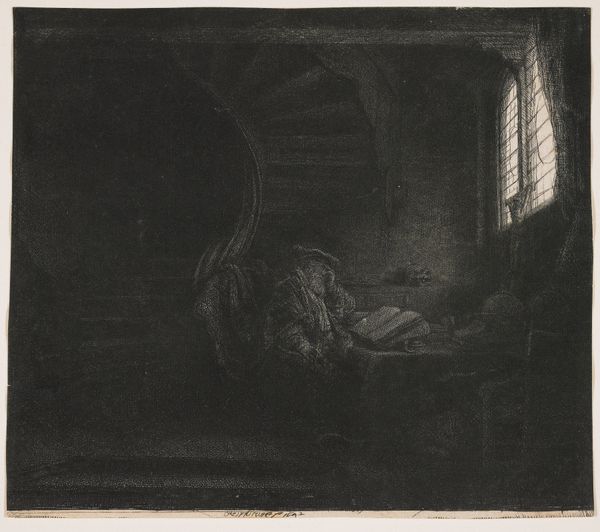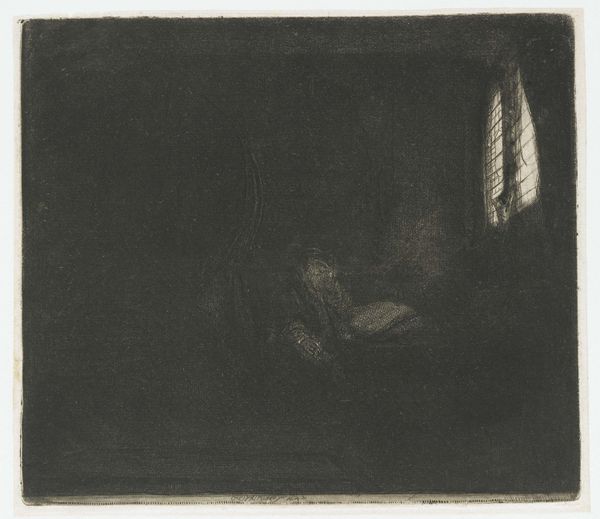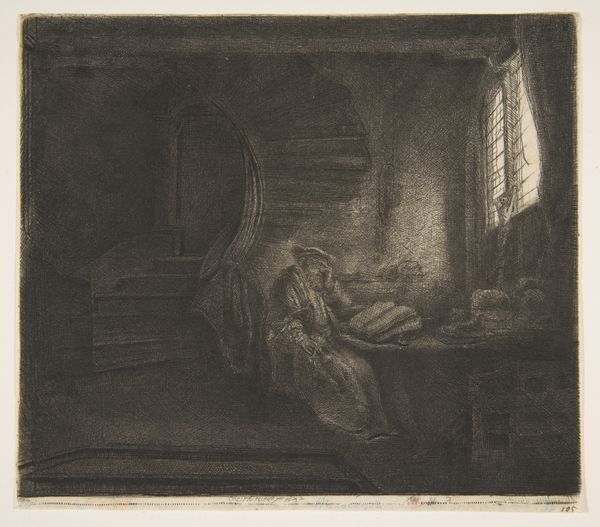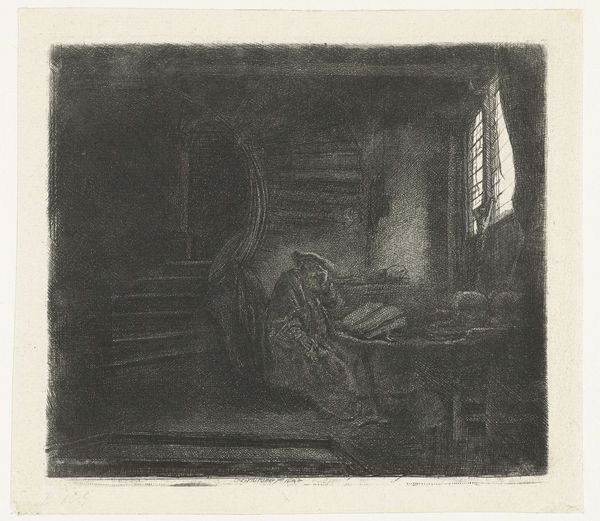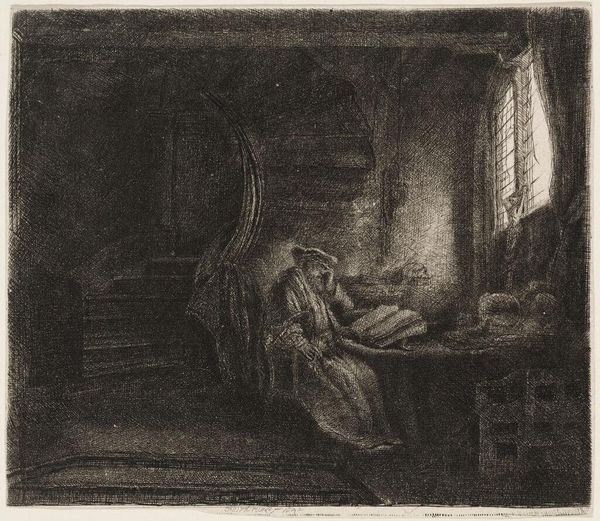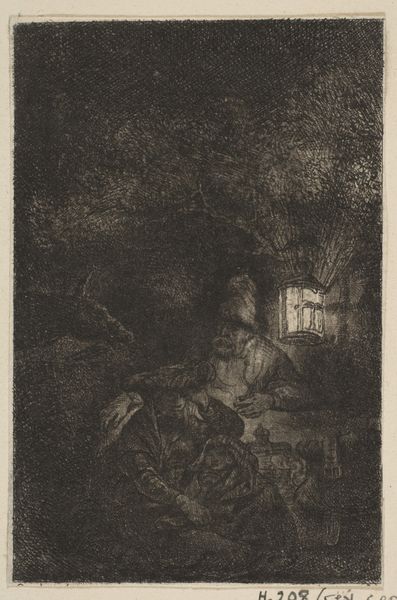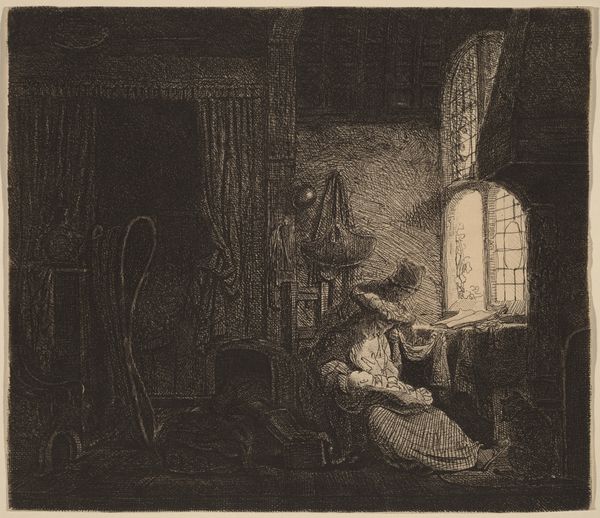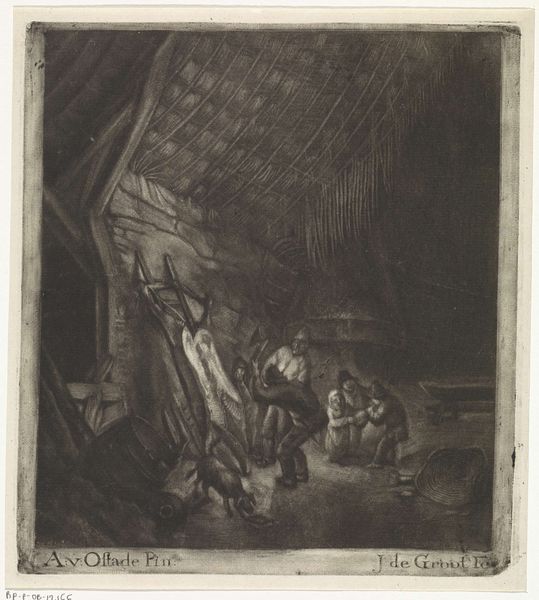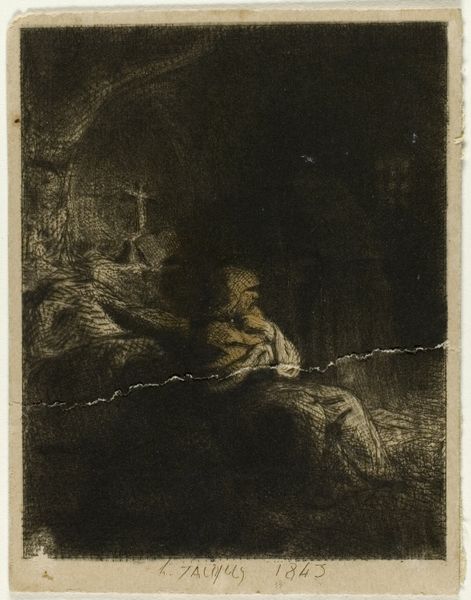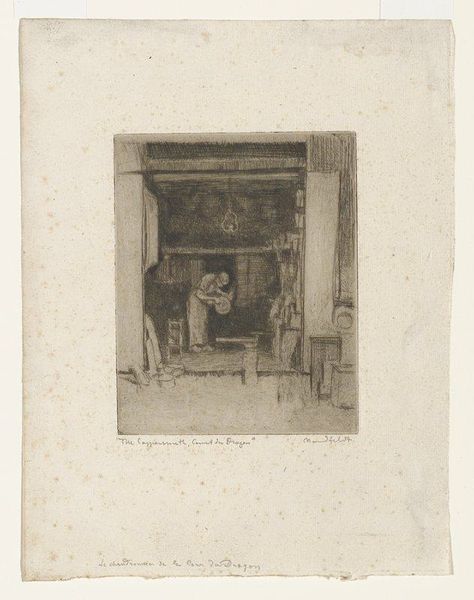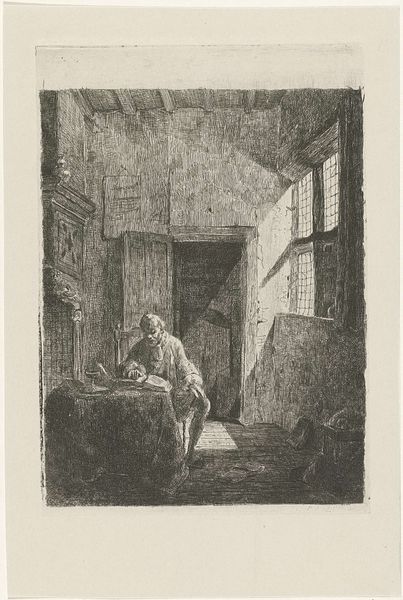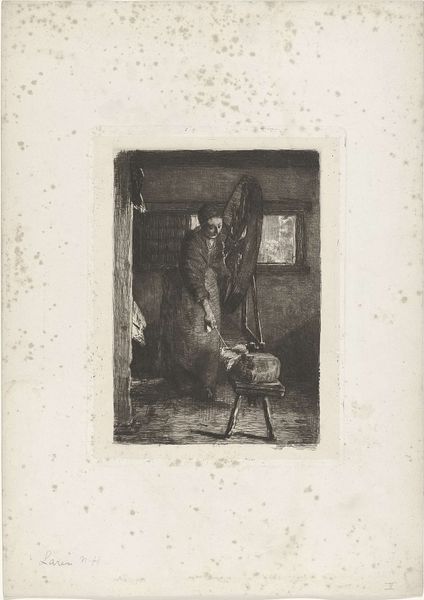
drawing, print, etching, paper, ink
#
portrait
#
drawing
#
baroque
# print
#
etching
#
pencil sketch
#
paper
#
ink
#
coloured pencil
#
chiaroscuro
#
genre-painting
#
history-painting
Dimensions: height 150 mm, width 173 mm
Copyright: Rijks Museum: Open Domain
Editor: So, this is Rembrandt van Rijn’s "St Jerome in a dark chamber," from 1642, an etching on paper currently housed in the Rijksmuseum. The dark mood is captivating. I am interested in your insights, especially concerning its production, what can you share? Curator: Given this is an etching, let's consider the labor involved. Etching demands meticulous work, a resistance ground applied to the metal plate, the design carefully scratched through, then acid to bite the exposed lines. Editor: Yes, you can really feel the labor intensity in the details... how does this production process inform its meaning? Curator: Think about the status of printmaking in the 17th century. Prints democratized images, making them accessible to a wider audience beyond wealthy patrons of unique paintings. What does this tell us about Rembrandt’s intentions or even the possible art market at the time? Editor: That's really interesting. The original artwork becomes more widely distributed; almost commodified in a way? Is this democratization maybe influencing the subject of this artwork? I mean, what would St Jerome himself think of this "distribution"? Curator: Precisely. And consider the materials themselves – the copper, the acid, the ink, the paper. These weren't simply neutral supports for artistic expression. Access to, and control over these materials held certain social, economic, or even geographic weight at the time, isn't it? Editor: Absolutely, It shifts the focus away from the sole genius of the artist and highlights the network of artisans and materials involved. I learned so much, focusing not just on image, but on materiality. Curator: Exactly! By recognizing artistic creation as reliant on production, labour, and material access, we can more broadly connect art to history, economy, and cultural values.
Comments
No comments
Be the first to comment and join the conversation on the ultimate creative platform.
